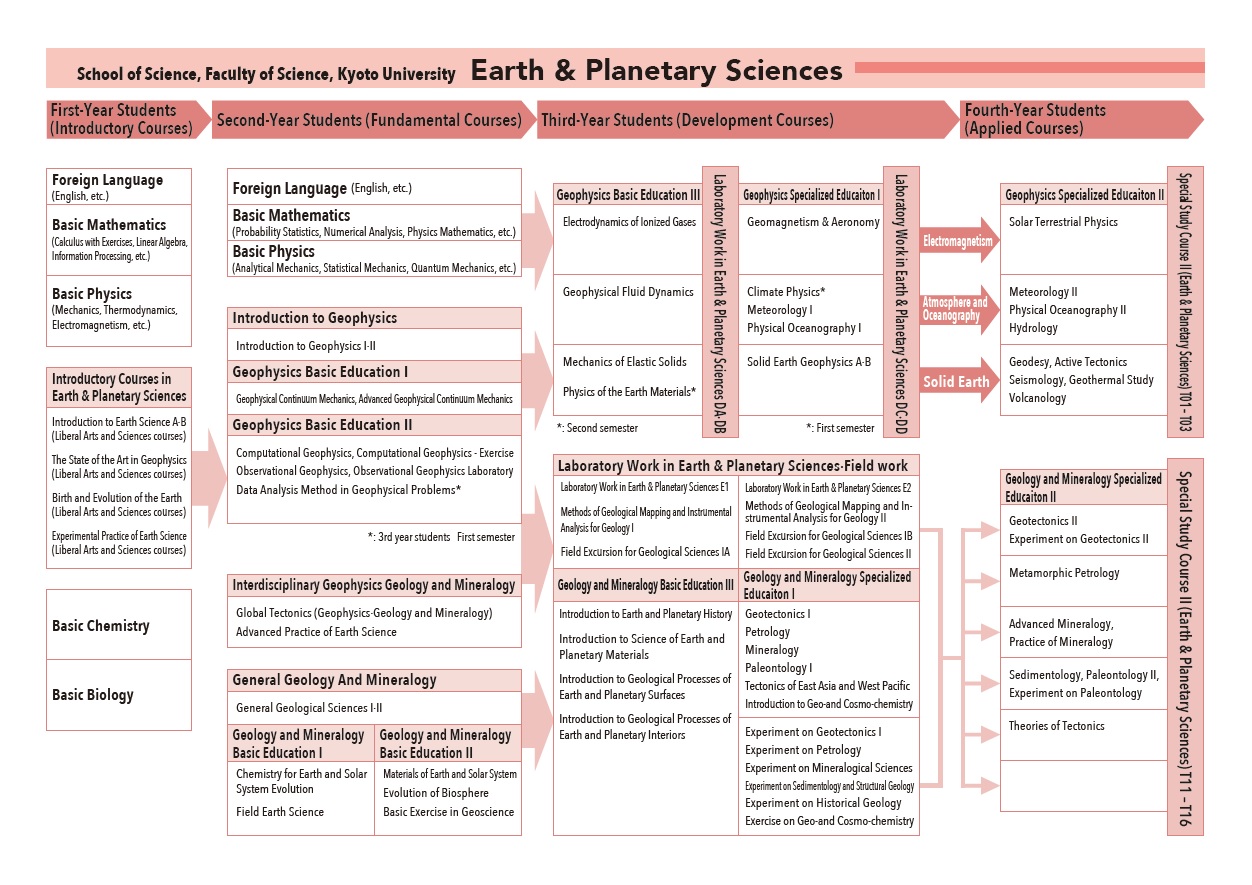Undergraduate Studies
To prospective students in the Geophysics Department, the Division of Earth and Planetary Sciences
Geophysics examines domains from the Earth's interior to areas of our solar system directly observable by human-made satellites. This field considers topics such as the mechanisms of spatial structures, the presence of materials, and the physical mechanisms of dynamic phenomena, using techniques including observation, data analysis, laboratory testing, numerical experiments, and theory. Roughly speaking, our areas of interest can be divided into three groups: solid geophysics, liquid geophysics, and solar-terrestrial physics. Along with deeper understanding of these areas in recent years, it has become increasingly common to view phenomena from a "solar-terrestrial systematics" perspective, which treats the Earth and solar system as a single interacting system. This is leading to the birth of new academic fields that combine mathematics, physics, and information systems.
To prospective students in the Geology and Mineralogy Department, the Division of Earth and Planetary Sciences
Along with understanding the various phenomena presently occurring on the Earth, Geology and Mineralogy is a field that strives to uncover more of Earth's 4.6-billion-year history through study of, in particular, materials such as minerals, rocks, fossils, and Earth strata. Through coursework in geology and mineralogy, you will focus on the geological sciences to learn more about the varied fields of research in the Earth and planetary sciences and the research methods particular to those fields. Even if you have had little opportunity to study the Earth sciences in the past, by your fourth year, our curriculum will prepare you with a foundation for research.
Main areas of research in geology and mineralogy are as follows:
- The study of rocks, minerals, and meteorites to discover the nature and structure of the substances that make up the Earth and planets, at scales ranging from nanometers (atomic arrangements) to tens of thousands of kilometers (the entire Earth), as well as the origins and developmental processes of these substances
- The study of long-term changes in the Earth's crust, mantle, and strata environments through dating, isotope chemistry, and deformation analysis
- The study of changes in the Earth's surface throughout its geological history and the evolutionary history of its flora and fauna
- The study of the 4.6 billion years of the Earth's and solar system's evolution and history, including biological evolution and functioning, through applying analysis of the chemical and isotopic composition of materials to extract information related to the time of material formation and the physicochemical environment of that time
Course Tree (as of 2021)
The Kyoto University International Undergraduate Program (Kyoto iUP)
The Kyoto University International Undergraduate Program (Kyoto iUP) takes advantage of the university's location to provide students with a unique bilingual environment in which to undertake their studies and research in both Japanese and English. Students are not required to have any Japanese language ability at the start of the program.
The program consists of a six-month preparatory course and four-year undergraduate program. In addition to classes in each student's major field of specialization, the program provides intensive Japanese language classes. Graduates will be fully equipped to assume leadership positions in globally active Japanese companies, and to become active members of Japanese society.
For more information, please visit the following websites:

 MENU
MENU